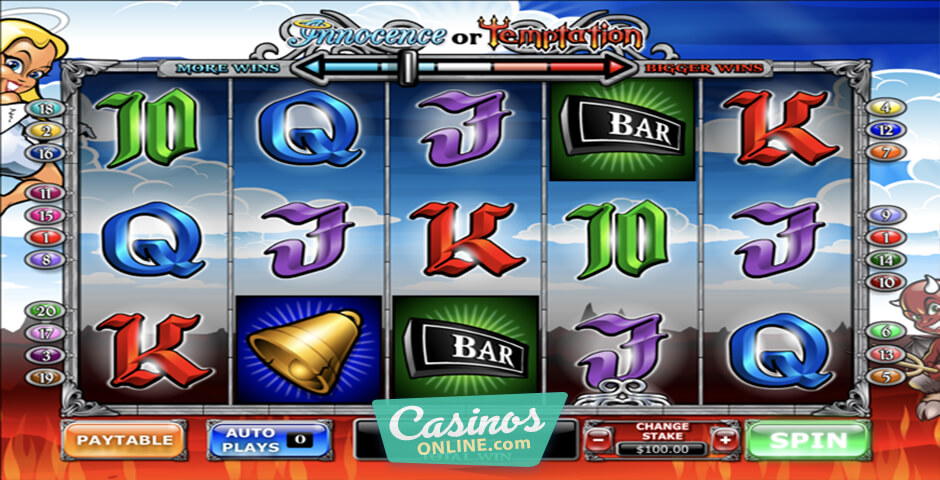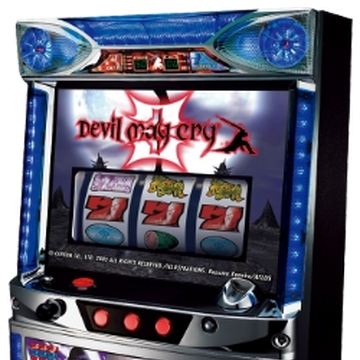Slot Angel Or Demon
Posted : admin On 3/28/2022Angels and demons, as noted earlier, have been categorized as benevolent, malevolent, or ambivalent or neutral beings that mediate between the sacred and profane realms.
Slot Angel Ili Demon Lyrics
Angels and Demons of Slot Play 9 June 2020 By Frank Scoblete. They hover in, over and around those machines, airy beings floating their powerful ideas into your mind. They are the good voices and the bad voices; the ones telling you to play, play, and play some more; and the ones that tell you to take a break, don’t chase your losses; wise up. There are two types of spins and depending on the zone of merging, you’ll get Angel or Demon Spins. If the merge happened on the 1 st reel, the Angels Spins include 5 extra spins without Imp, Skull and Demon Wild symbols. The Demon Spins include 5 spins without Fairy, Goblet and Angel Wild symbols and are triggered by the merge on the 5 th reel.


Benevolent beings
Benevolent beings, usually angels but sometimes ghosts of ancestors or other spiritual beings that have been placated by sacrifices or other rituals, assist humans in achieving a proper rapport with God, other spiritual beings, or humans’ life situations. Angels, for example, not only act as revealers of divine truths but also are believed to be efficacious in helping people to attain salvation or special graces or favours. Their primary function is to praise and serve God and do his will. This is true of angels in both Christianity and Zoroastrianism as well as in Judaism and Islam. As functional extensions of the divine will, they sometimes intervene in human affairs by rewarding the faithful and punishing the unjust or by saving the weak, who are in need of help, and destroying the wicked, who unjustly persecute their fellow creatures. In the intertestamental book of Tobit (an apocryphal, or “hidden,” book that is not accepted as canonical by Jews and Protestants), the archangelRaphael (“God Heals”), for example, helps the hero Tobias, the son of Tobit, on a journey and also reveals to him magic formulas to cure his father’s blindness and to counteract the power of the demon Asmodeus.
Slot Angel Or Demon Possessed
Angels have been described as participants in the creation and providential continuance of the cosmos. Clement of Alexandria, influenced by Hellenistic cosmology, stated that they function as the movers of the stars and control the four elements—earth, air, fire, and water. Many angels are believed to be guardians over individuals and nations. The view that there are guardian angels watching over children has been a significant belief in the popular piety of Roman Catholicism. Angels are also regarded as the conductors of the souls of the dead to the supraterrestrial world. In the procreation of humans, angels are believed to perform various services. This is especially noticeable in the instances of angels announcing the births of divine figures or special religious personages, such as Jesus and John the Baptist in the New Testament.
Though the function of angels is of primary significance, theological reflection and popular piety have placed much emphasis on the nature of angels. In early Judaism angels were conceived as beings in human form: the angel who wrestled with the patriarch Jacob, as recorded in the book of Genesis, was in the form of a man. In Judaism of the Hellenistic period (3rd century bce to 3rd century ce), however, angels were viewed as noncorporeal spiritual beings who appeared to humans in an apparitional fashion. Their spiritual nature had been emphasized earlier by Hebrew prophets, such as Ezekiel and Isaiah, in their visionary descriptions. The cherubim and seraphim, two superior orders of angels, are described as winged creatures that guard the throne of God. The use of wings attached to various beings symbolizes their invisible and spiritual nature, a practice that can be traced back to the ancient Egyptians, who represented the battling sun-god Horus of Edfu as a winged disk. In Christian iconography the spiritual nature of angels has been almost universally represented—until the 20th century—by winged human figures. Their spirituality and, therefore, their noncorporeality led to various kinds of speculation among theologians and common people about the nature of the appearances of angels, which has been recorded in both Scripture and legends based on popular piety. Some theologians, such as St. Augustine in the 4th–5th century, stated that angels, who have ethereal bodies, may be able to assume material bodies. This problem, however, has not been solved to the satisfaction of later theologians.
Malevolent beings

Malevolent beings—demons, fallen angels, ghosts, goblins, evil spirits in nature, hybrid creatures, the daevas of Zoroastrianism, the narakas (creatures of hell) of Jainism, the oni (attendants of the gods of the underworld) in Japanese religions, and other such beings—hinder humans in achieving a proper relation with God, the spiritual realm, or human life situations. Some angels are believed to have fallen from a position of proximity to God—such as Lucifer (after his fall called Satan by early Church Fathers) in Judaism, Christianity, and Islam—because of pride or for attempts to usurp the position of the Supreme Being. In their fallen condition they attempt to keep humans from gaining a right relationship with God by provoking them to sin. Some medieval scholars of demonology ascribed to a hierarchy of seven archdemons the seven deadly sins: Lucifer (Pride); Mammon (Avarice); Asmodeus (Lechery); Satan (Anger); Beelzebub (Gluttony); Leviathan (Envy); and Belphegor (Sloth). Besides tempting humans to sin, the fallen angels, or devils, were believed to cause various types of calamities, both natural and accidental. Like the demons and evil spirits of nature in nonliterate religions, the fallen angels were viewed as the agents of famine, disease, war, earthquakes, accidental deaths, and various mental or emotional disorders. Persons afflicted with mental diseases were considered to be “demon possessed.”

Though the functions of demonic figures, like those of fallen angels, is of major significance, the nature of demons has been of concern to theologians and persons infused with popular piety. Like angels, demons are regarded as spiritual, noncorporeal beings, but they have been depicted in religious iconography as hybrid creatures with horrifying characteristics or as caricatures of idols of an opposing religion. In the early church, for example, there was a belief that pagan idols were inhabited by demons. The horrifying aspects of demons have been represented in the woodcuts of medieval and Reformation artists and in the masks of shamans, medicine men, and priests of nonliterate religions—either to frighten the believer into behaving according to accepted norms or to ward off ritualistically the power of the demonic forces loose in the terrestrial or profane realm.
Ambivalent or neutral beings
Ambivalent or neutral spiritual beings are usually not found in Western religions, which usually divide the inhabitants of the cosmos into those who are either allied with or in opposition to the Supreme Being. Islam, however, classifies spiritual beings into angels (malā’ikah), demons (shāyaṭīn), and jinn (singular jinni), or genies. This last category includes spiritual beings that might be either benevolent or malevolent. According to legend, the jinn were created out of fire 2,000 years before the creation of Adam, the first human. Capable of both visibility and invisibility, a jinni could assume various forms—either animal or human—and could be either a help or a hindrance to humans. By cunning, a superior use of intellect, or magic, people might be able to manipulate a jinni for their own benefit.
Various minor nature spirits—such as the spirits of water, fire, mountains, and winds and other spirits recognized in nonliterate religions—are generally neutral, but, in order to keep them that way or to make them beneficial to humans, proper sacrifices and rituals must be performed.